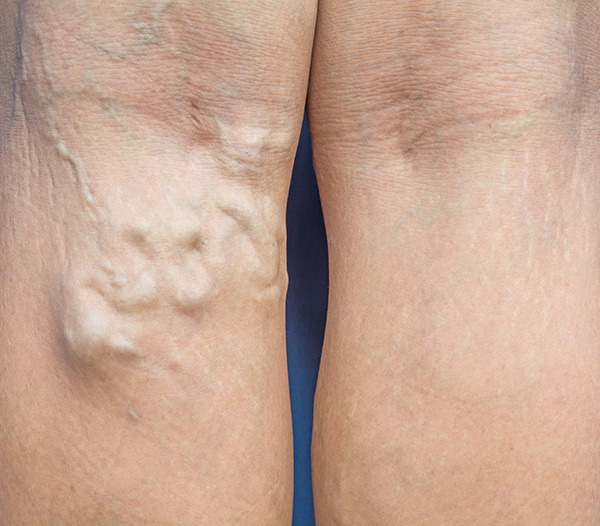Long, tortuous & dilated veins of the superficial venous system
Blood from superficial veins of the leg pass into deep veins via perforation veins. Valves prevent blood flowing backward. If these don’t work this increases the pressure causing dilation.

Causes/Factors
- Heredity: A family history of varicose veins can increase the risk.
- Age: Risk increases with age as veins lose elasticity.
- Gender: Women are more prone to varicose veins due to hormonal changes, including Pregnancy.
- Pregnancy: Increased pressure on the veins in the pelvis and legs.
- Obesity: Excess weight can put more pressure on the leg veins.
- Prolonged Standing or Sitting: Occupations or activities that involve long periods of sitting or standing.
Symptoms
- Visible Veins: Enlarged, twisted, and dark purple or blue veins.
- Aching or Pain: Often in the legs, which may worsen after long periods of standing or sitting.
- Itching and Burning: Discomfort around the affected veins.
- Swelling: Swelling of the ankles and lower legs.
- Cramps: Muscle cramps in the legs.
Signs
- Visible Veins: Twisted and bulging veins that can be seen through the skin.
- Oedema: If blood cannot return fluid may accumulate in legs
- Eczema: Skin may become discoloured, dry, and itchy around the veins.
- Skin Ulcers: In severe cases, Skin Ulcers can develop near the ankles.
Diagnostic Tests
Duplex Ultrasound: A non-invasive test to visualize blood flow in the veins.
Management
Treat underlying cause
- Lifestyle Modifications: Exercise, weight management, and elevation of the legs can help improve blood flow.
- Compression Stockings: Wearing compression stockings to alleviate symptoms and improve blood flow.
- Sclerotherapy: Injection of a solution into the veins to close them.
- Endovenous Laser Treatment (EVLT) or Radiofrequency Closure: Minimally invasive procedures to close affected veins.
- Vein Stripping: Surgical removal of the affected vein, usually performed in severe cases.
Complications/red Flags
On their own VVs DO NOT cause DVT